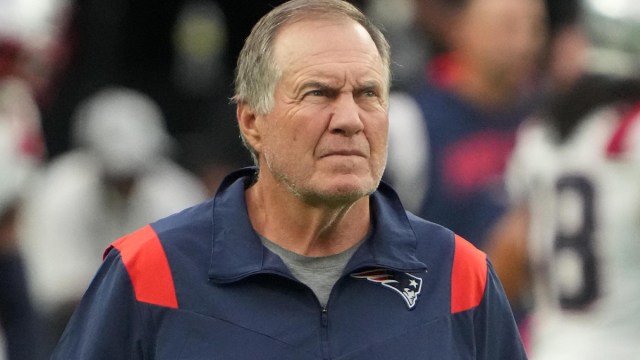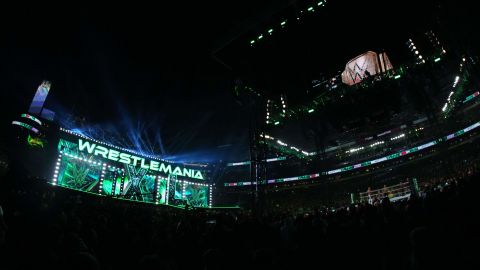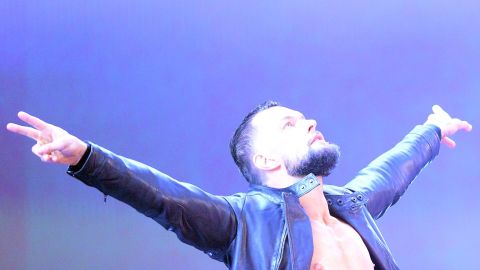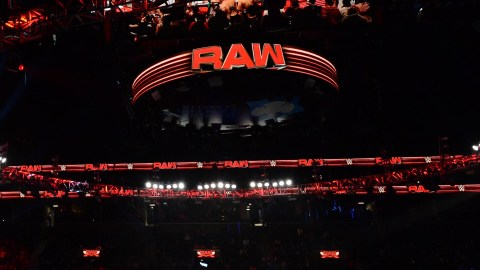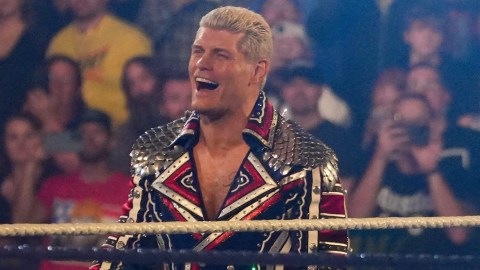The “Triple H Era” of WWE has been getting into the swing of things, but the company hasn’t altered dramatically since Paul Levesque became head of creative.
The former WWE COO took control of the position after Vince McMahon resigned as chairman and CEO of WWE on July 22. Nick Khan and Stephanie McMahon have taken over as co-CEOs, and Stephanie McMahon is now the chairwoman of the board. Vince McMahon still retains over 80% of voting power, however.
What goes on in these meetings is unknown. What fans can see is what happens on WWE’s three weekly shows: Raw, NXT and SmackDown — Raw and SmackDown being the most important and most watched.
For those who haven’t been tuning in every week, you’re probably wondering what’s been different under Levesque. Quite frankly, not a whole lot. Roman Reigns is still the Undisputed Universal Champion, and it doesn’t seem like Drew McIntyre will beat him at Clash at the Castle on Saturday.
It appears Kevin Dunn is still around as producer because the incessant camera cuts remain a part of WWE broadcasts. WWE talent are no longer watching the monitors or a television at an angle, but that’s honestly such a small thing only the die-hard fan would notice.
But there are few things that are different from the “Vince McMahon era” Levesque has implemented into the product. Here are three of them.
1. A stronger focus on in-ring wrestling
A wrestling company that prioritizes wrestling? Novel concept. Though, if you ask those at the top in the company, they’ll tell you WWE is a media company and not a wrestling company. But a layman would probably compare WWE to All Elite Wrestling before comparing the “media company” to Apple, Netflix or Amazon.
Speaking of AEW, something they always got right was starting a show off with a wrestling match. It’s a kinetic start to a wrestling show and gets the audience in from the jump. WWE has strayed from this, and typically, shows began with a promo. Now, there are times when this is appropriate, but most of the time, it served as a lackluster start to a program, especially worst for a three-hour show in Raw.
Under Levesque, in-ring wrestling has been given more of a spotlight. Matches are longer and take up more quarter hours, which gives the talent time to tell stories in the ring and gives others a chance to show the audience what they can do. This was highlighted in an Aug. 15 Raw segment between McIntyre and Kevin Owens where they name-dropped the word “wrestler” — in WWE, talent are referred to as “superstars” because the company is “sports entertainment” (the history behind that is a lot more complex).
It was a brilliant, fiery exchange between the two former WWE Champions and was a good encapsulation of what the “Triple H” era is all about.
2. NXT “Black and Gold” talents return
In Sept. 2021, NXT made the switch to “NXT 2.0.” The show is now a developmental show for the more “green” WWE talents and a small handful of veterans helping them out. The old era of NXT was dubbed the “Black and Gold” era — a time period in the mid-2010s where the brand was considered on-par to Raw and SmackDown and often featured the best matches of the year for WWE.
During the COVID-19 pandemic, many of these talents were released or didn’t sign a new contract, with “budget cuts” being the official reason for their departure despite WWE making record profits year over year. Not everyone was cut and some made their way to the main roster. But a few of them have returned since Levesque took over as head of creative, and that’s probably not a coincidence.
Levesque was in charge of NXT and recruited many independent wrestlers to WWE. These talents have developed a strong relationship with Levesque, and their returns to WWE likely show they prefer to work with Levesque than McMahon.
The debuts started with Dakota Kai and Iyo Sky at SummerSlam. Dexter Lumis made a surprise appearance on Raw. Karrion Kross and Scarlett made their SmackDown debuts to confront WWE Undisputed Universal Champion Roman Reigns, and Hit Row made their return to the company
Johnny Gargano was probably the most impactful return. The shift to “NXT 2.0” was part of a reported initiative by McMahon to recruit taller and bigger male athletes to become future WWE stars. The 5-foot-10, 199-pound Gargano did not fit the bill of a “Vince McMahon” guy, but the wrestling industry has changed to where guys who look like Gargano can become main-event stars, and fans have gravitated toward that.
3. NXT Europe
This is a new branch of the NXT brand coming in 2023 that will “reimagine the brand and talent pipeline,” per WWE press release. “It will replace NXT UK, and wrestlers from that brand have made their appearances on NXT 2.0, with NXT UK Champion Tyler Bate taking on NXT Champion Bron Breakker at Worlds Collide on Sunday.
Wrestling fans hope NXT Europe will not be as hurtful to the European independent scene as NXT UK was to the England independent scene. WWE scooped up top talents in the United Kingdom, and those wrestlers were locked into working only for WWE, hurting local promotions that suddenly lost top talent in the scene.
The move is likely a rebirth of Levesque’s “global localization” strategy of having an NXT and Performance Center across the world. There were plans for NXT Japan, but the combination of an established wrestling scene and the COVID-19 pandemic made those plans “dead in the water,” according to Dave Meltzer of The Wrestling Observer.
Levesque hasn’t been in charge for more than a month, but there are at least attempts to change WWE, even if they’re more aesthetic, so far.




